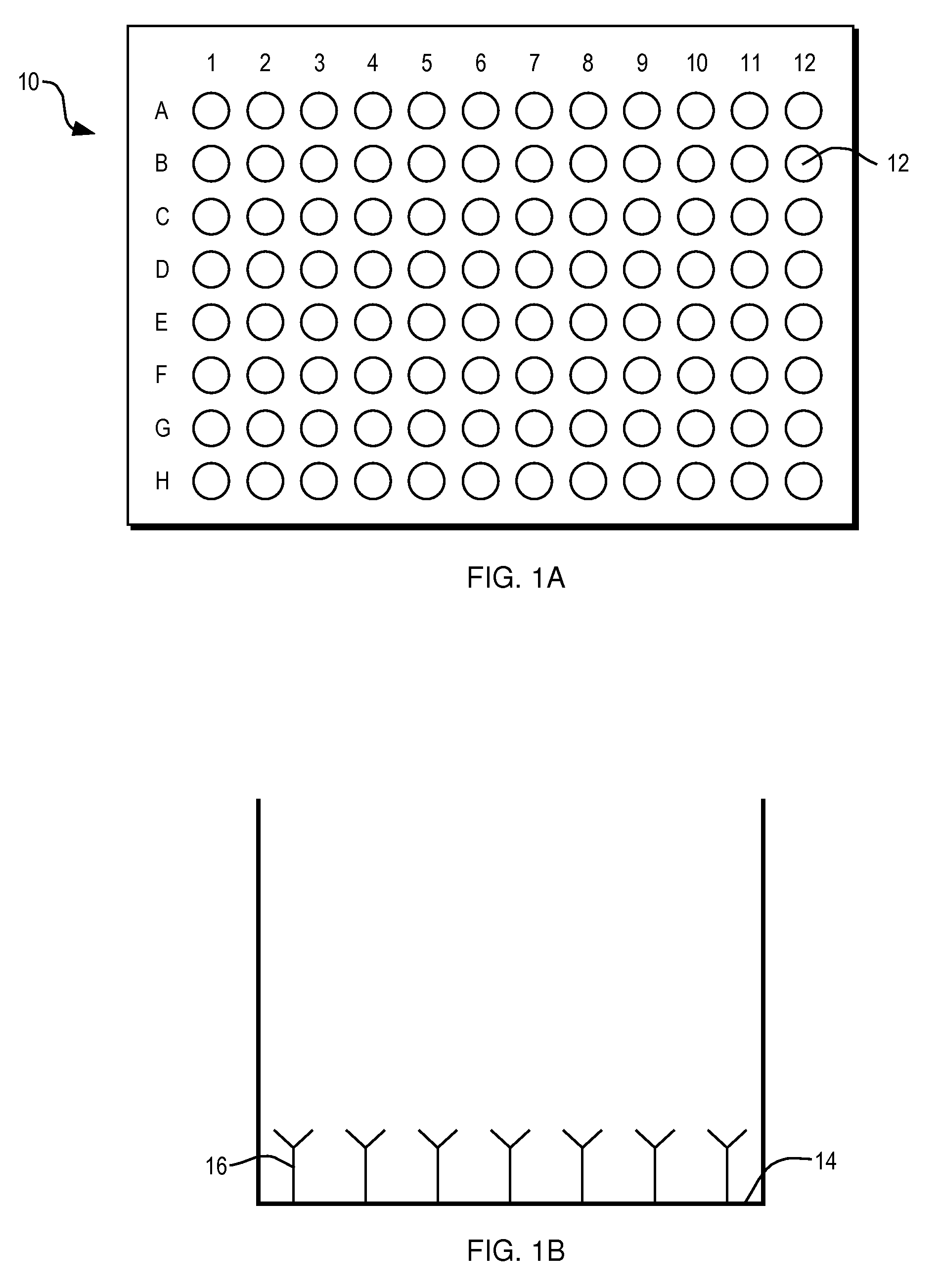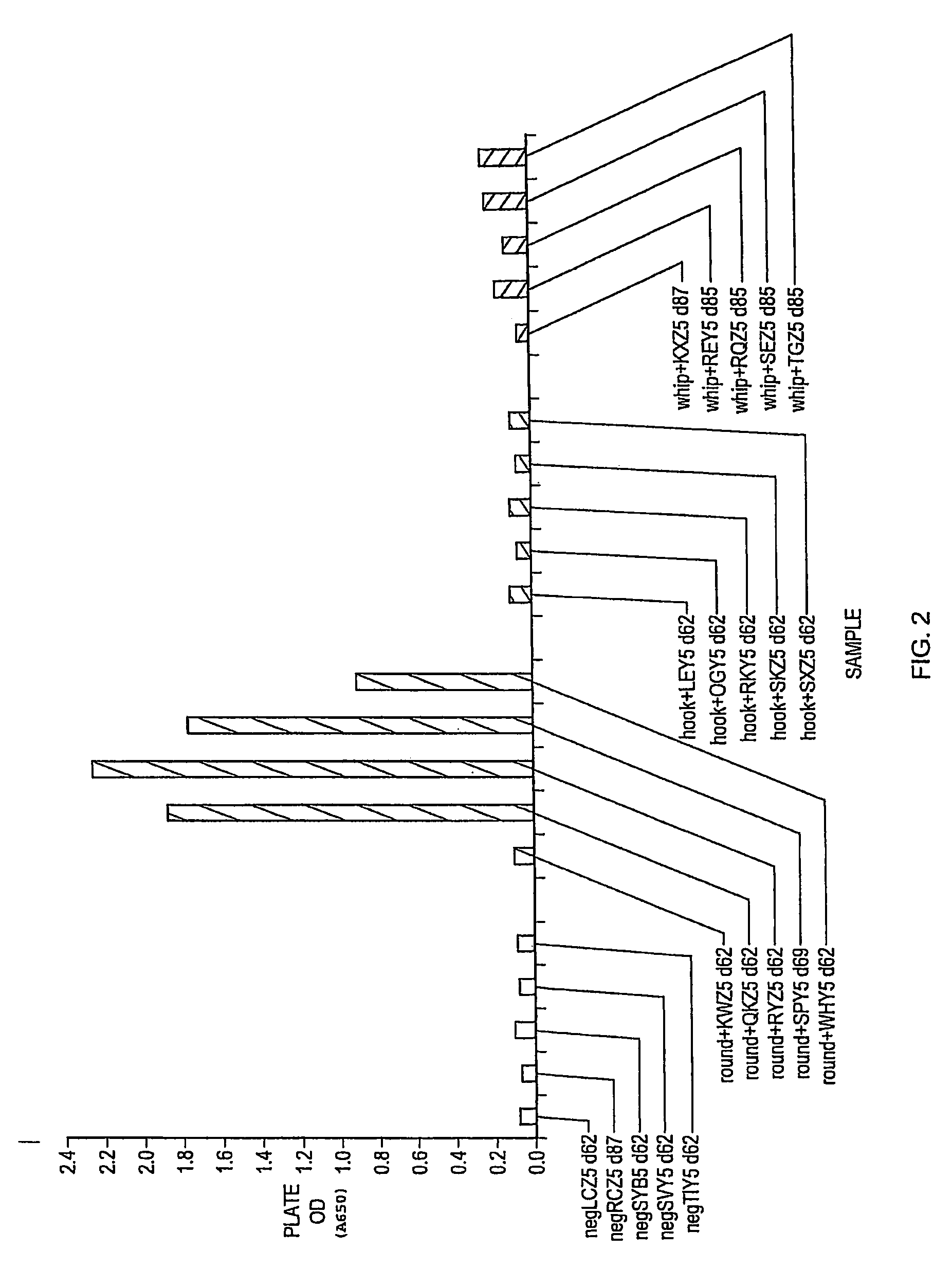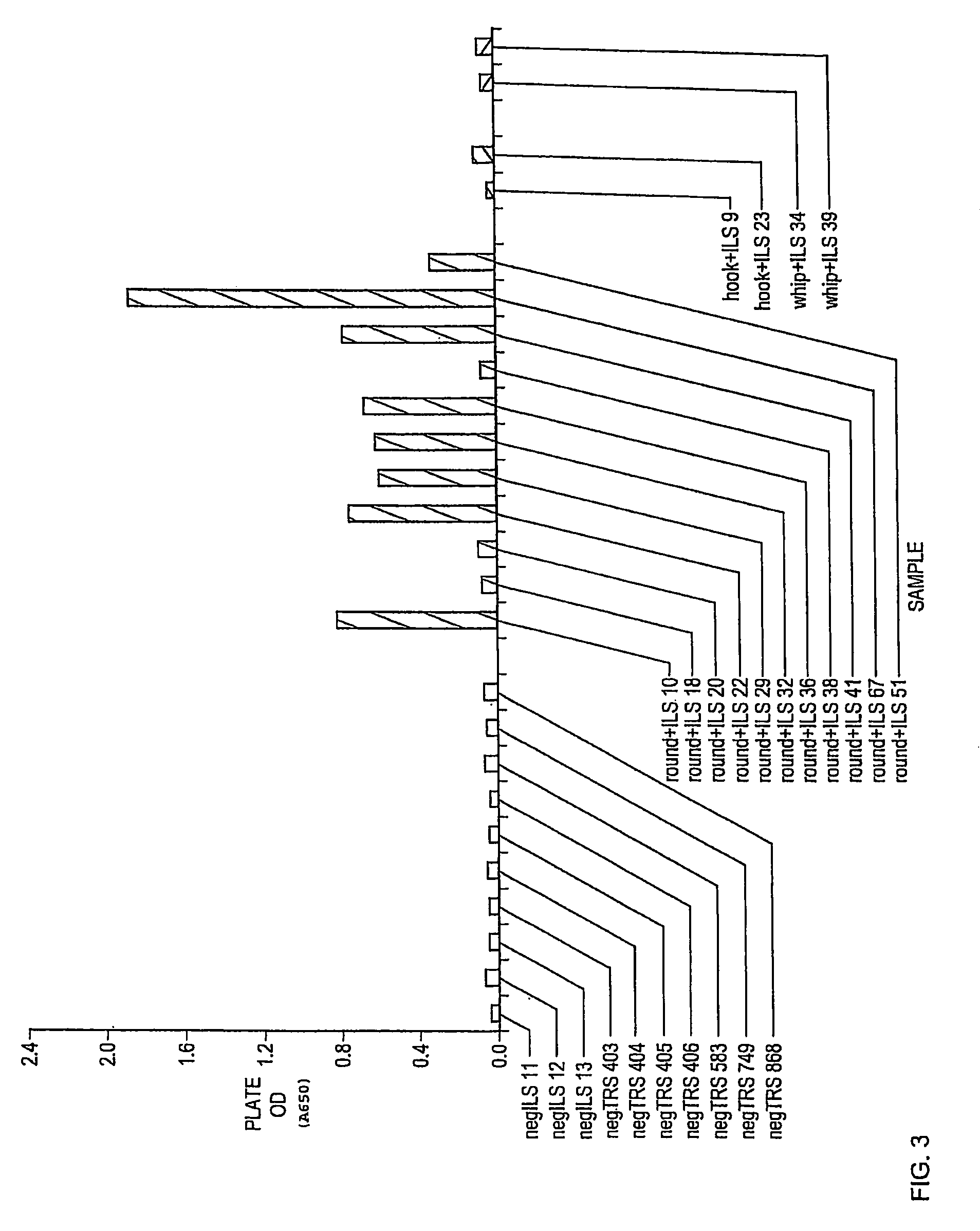Roundworm coproantigen detection
a technology of coproantigen and roundworm, which is applied in the field of roundworm coproantigen detection, can solve the problems of serious disease and even death, significantly more difficult to identify roundworms, and not optimally effective against roundworms
- Summary
- Abstract
- Description
- Claims
- Application Information
AI Technical Summary
Benefits of technology
Problems solved by technology
Method used
Image
Examples
example a
[0033]The following materials and methods were used to generate data described in Experiments 1, 2, 3, and 4 described below.
[0034]Polyclonal antibody preparation. The polyclonal antibody “anti-Toxocara pAB” (IgG) was raised in rabbit against whole roundworm (Toxocara canis) extract (Antibody Systems Inc., Hurst, Tex.) and purified from serum by using standard methods. Briefly, an extract of disrupted whole roundworms was prepared by harvesting roundworms from infected canine animals, washing them, and resuspending them in solution. The resuspended worms were then disrupted by tissue homogenization, pelleted by centrifugation, and resuspended in solution. This resuspension was administered to rabbit and serum from the immunized rabbits was collected. Anti-Toxocara pAB was purified from the plasma of the immunized rabbits by isolating IgG antibody by protein G affinity chromatography.
[0035]Infection and anti-helminth treatment of canine and feline animals. For all four Experiments, p...
experiment 1
[0038]Anti-Toxocara pAB specifically binds roundworm, but does not specifically bind hookworm or whipworm, in canine fecal samples.
[0039]It was a goal of Experiment 1 to determine whether anti-Toxocara pAB specifically binds coproantigen of roundworm, hookworm, and / or whipworm in canines. OD determinations for 20 canine fecal samples obtained in Experiment 1 are shown in FIG. 2. Specifically, these fecal samples were obtained from five canine animals known to be free of parasitic worm infection (negLCZ5 d62, negRCZ5 d87, negSBY5 d62, negSVY5 d62, and negTIY5 d62), five canine animals known to be infected with roundworm (round+KWZ5 d62, round+QKZ5 d62, round+RYZ d62, round+SPY5 d69, and round+WHY5 d62), five canine animals known to be infected with hookworm (hook+LEY5 d62, hook+OGY5 d62, hook+RKY5 d62, hook+SKZ5 d62, and hook+SXZ5 d62), and five canine animals known to be infected with whipworm (whip+KXZ5 d87, whip+REY5 d85, whip+RQZ5 d85, whip+SEZ d85, and whip+TGZ d85). Fecal sampl...
experiment 2
[0041]Anti-Toxocara pAB does not specifically bind heartworm in canine fecal samples.
[0042]It was a goal of Experiment 2 to determine whether anti-Toxocara pAB specifically binds heartworm coproantigen. OD determinations for 25 canine fecal samples obtained in a second experiment are shown in FIG. 3. Specifically, FIG. 3 shows data obtained as the result of testing fecal samples from three canine animals known to be free of parasitic worm infection (negILS 11, negILS 12, and negILS 13), seven canine animals known to be naturally infected with heartworm (negTRS 403, negTRS 404, negTRS 405, negTRS 406, negTRS 583, negTRS 749, and negTRS 868), 11 canine animals know to be infected with roundworm (round+ILS 10, round+ILS 18, round+ILS 20, round+ILS 22, round+ILS 29, round+ILS 32, round+ILS 36, round+ILS 38, round+ILS 41, round+ILS 67, and round+ILS 51), two canine animals known to be infected with hookworm (hook+ILS 9 and hook+ILS 23), and two canine animals known to be infected with wh...
PUM
| Property | Measurement | Unit |
|---|---|---|
| temperature | aaaaa | aaaaa |
| OD | aaaaa | aaaaa |
| OD | aaaaa | aaaaa |
Abstract
Description
Claims
Application Information
 Login to View More
Login to View More - R&D
- Intellectual Property
- Life Sciences
- Materials
- Tech Scout
- Unparalleled Data Quality
- Higher Quality Content
- 60% Fewer Hallucinations
Browse by: Latest US Patents, China's latest patents, Technical Efficacy Thesaurus, Application Domain, Technology Topic, Popular Technical Reports.
© 2025 PatSnap. All rights reserved.Legal|Privacy policy|Modern Slavery Act Transparency Statement|Sitemap|About US| Contact US: help@patsnap.com



